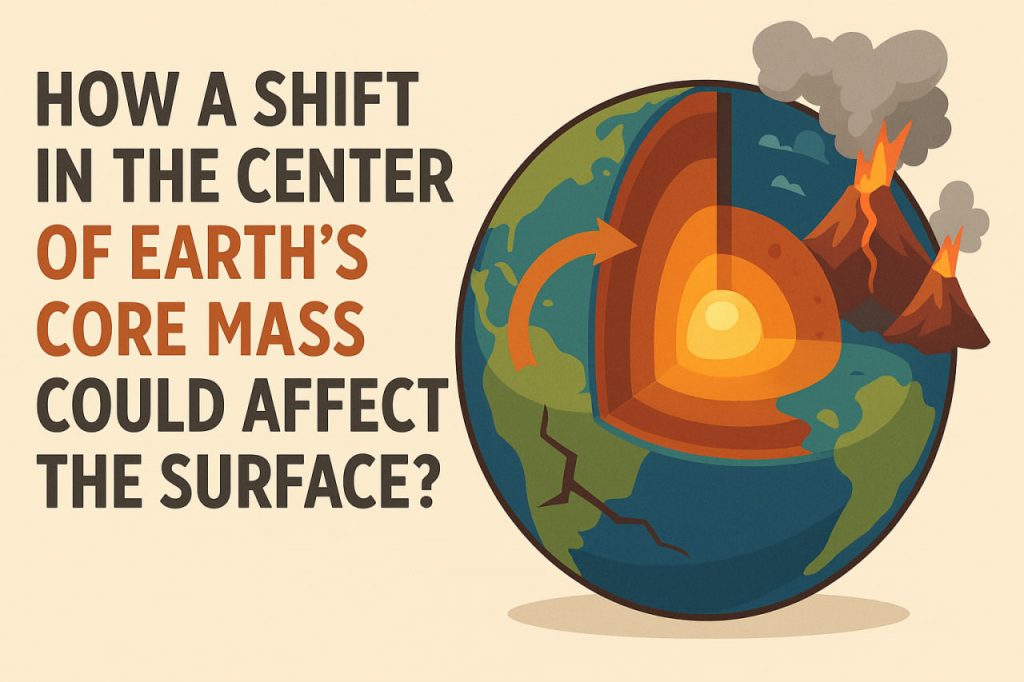The Earth’s core plays a crucial role in maintaining the planet’s balance, magnetic field, and internal stability. The inner and outer core consist mostly of iron and nickel, and together they help regulate Earth’s rotation and geodynamic processes. If the mass center of the core were to shift, even slightly, the effects on the Earth’s surface could be dramatic and far-reaching.
Changes in Earth’s Rotation
The Earth spins around its axis with remarkable stability, largely due to the even distribution of mass. If the core’s mass center shifted, the axis of rotation could tilt or wobble more strongly. This would influence the length of days and seasons, potentially causing climate patterns to destabilize over time.
Impact on the Magnetic Field
The outer core generates Earth’s magnetic field through the geodynamo effect. A displacement in the core could disrupt this process, leading to a weaker or irregular magnetic field. This would increase our vulnerability to solar radiation and geomagnetic storms, affecting satellites, power grids, and navigation systems.
Seismic and Volcanic Activity
A core mass shift would redistribute pressure inside the mantle, possibly causing more frequent and stronger earthquakes and volcanic eruptions. Entire tectonic systems could be destabilized, especially in already active seismic zones such as the Pacific Ring of Fire.
Rising Sea Levels and Crust Deformation
The redistribution of mass would also impact the planet’s gravitational field. Oceans would attempt to rebalance, leading to regional sea level changes. Certain areas might experience unusual flooding, while others could see water retreat. Additionally, the Earth’s crust might warp, creating new mountain ranges or rift valleys.
Climate Instability
Since Earth’s tilt defines how sunlight reaches different regions, even small changes could alter global climate zones. Some regions might face extreme droughts, while others could experience intensified rainfall or cooling.
Potential Habitability Challenges
If the shift were significant, life on Earth would face challenges ranging from food production instability to threats to modern infrastructure. Humanity would need to adapt by strengthening monitoring systems and developing strategies to counter the effects of a destabilized planet.
Conclusion
A shift in the Earth’s core mass center would ripple through geophysics, climate, and human society, making the planet far less stable. While such an event is extremely unlikely, studying it helps us understand the delicate balance that makes Earth habitable today.
However, scientists have noted that there was a shift in the core between 1990 and 2010, and some experts believe that the significant increase in climate disasters on the planet may be related to this.
Glossary
- Geodynamo – the process by which Earth’s outer core generates the magnetic field.
- Magnetic Field – the protective shield around Earth deflecting harmful solar radiation.
- Seismic Activity – natural shaking of the ground caused by movement of Earth’s crust.
- Mantle – the thick layer of hot rock between Earth’s crust and core.
- Axis of Rotation – the imaginary line around which Earth spins, creating day and night.


